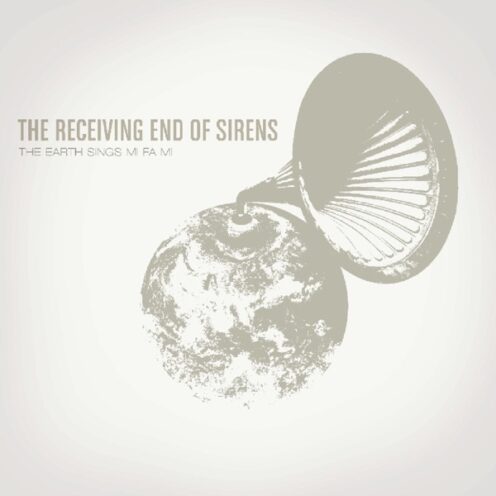
It is no small order to tackle a concept album based on Johannes Kepler’s theory of Earth’s tonal orbit, centering around the themes of misery and famine. And surely, this is not a process that becomes any easier when your band loses one of it’s prime creative forces in Casey Crescenzo, who has since gone on to do great things with his Dear Hunter project. So really, it is quite understandable that listeners are rather apprehensive as they first approach The Earth Sings Mi Fa Mi, the second studio album from The Receiving End of Sirens. With all factors considered, it sounded like the boys might have bitten off more than they could chew – especially when they were playing with a roster that Crescenzo disciples would (recklessly) consider “crippled.” Nevertheless, the band hit the studio with Matt Squire to take a swing at the expectations laid out before them, and have met them in stride.
It is absolutely essential to highlight that if you come into The Earth Sings Mi Fa Miexpecting Between the Heart and the Synapse Part II, you are going to be sorely disappointed by the differences between the works. This is not to say that fans of the first will not like the second, at all. But rather, if “Planning a Prison Break” was a barometer for the BTHATS, “Swallow People Whole” is an equally appropriate water mark for TESMFM. The new record’s commencement shows off what we should expect from this revamped TREOS – a more subdued approach that is calmer and more melodic, yet still tactfully affecting. All of the energy is channeled strategically, in a way that lends both the song and the album to a pair of massive crescendos that are really quite operatic and epic.
From there, The Earth is quite consistent, yet there are still variances between the songs that deserve to be analyzed. For those looking the bridge the gap from Between, then they shall look no further than “Smoke and Mirrors,” “Saturnus,” or “Stay Small.” These tracks all offer up the blazing guitar riffs, passionate hooks, and overall driving pulse of the TREOS we have all come to know and love. Besides these, there is still quite a bit to be enjoyed, but on a different set of levels. Whether it be progressive guitar chunks (“Oubliette (Disappear)”), narrative lyrics (“The Salesman, The Husband, The Lover”), surprisingly skilled beats/sequencing and gorgeous harmonies (“A Realization of the Ear”),The Earth Sings Mi Fa Mi is a very full, a very rich, and a very complex record. And everything comes to a head on the album’s final chapter, “Pale Blue Dot” which is quite simply a perfect closer. It is the type of slice that makes you swell up with pride and emotion, and makes you want to play the record over again just so you can get to that point once again. Stunning, for sure.
When I first came to hear how TREOS would sound in Round 2, I was incredibly nervous, and naturally so. The tracks released on their own were solid enough, but they were without the standalone punch that is inherently expected from a post-hardcore band such as this. But when you hear these songs within the context of the album and its corresponding story, it all sort of clicks. With a little background, you are able to understand the band’s vision and see it realized. The Receiving End of Sirens have given us a very ambitious album indeed. And for someone that has been sorely disappointed with what Matt Squire has churned out lately, I was quite pleasantly surprised to hear what he has done here. The production is clean, but not overdone, and layered without being overly cluttered or fake. The mixing could be better, as the percussion and bass can get lost in the sea of guitars and vocals, but it could certainly be worse. All in all, the sound of the record does its reach justice, and in total, The Earth Sings Mi Fa Mi excels brilliantly to deliver on the promises made by the potential of its sculptors. For those with an open mind, this record comes highly recommended.
 Smoke and Mirrors
Smoke and Mirrors